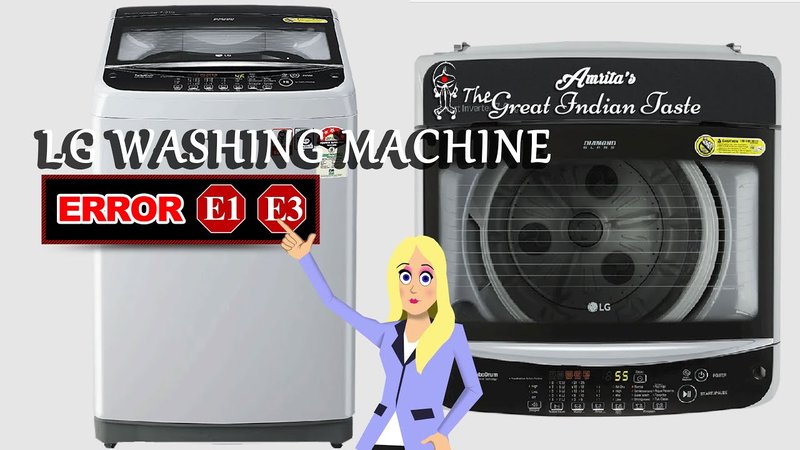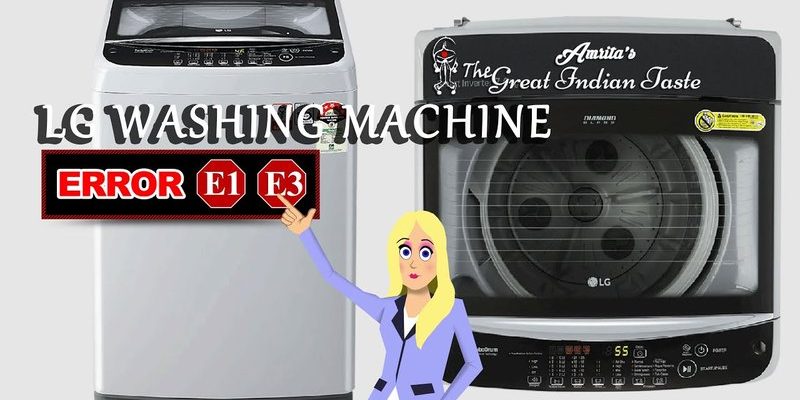
An LG washing machine displaying an “E1” error usually indicates a water supply issue. Imagine your washing machine as a big thirsty giant that needs a good drink of water to do its job. The E1 error is like the machine’s way of saying, “I’m not getting the water I need!” This message pops up when there’s trouble in the water flow, which is crucial for a washing machine to function correctly. Let’s dive deeper into what might be causing this hiccup.
Understanding the Error Code E1: What Exactly Is It?
The E1 error code is primarily related to water supply issues within your LG washing machine. Think of it as a distress signal, alerting you to check how well water is getting into the machine. Essentially, the washing machine senses that it’s not receiving the required amount of water inside its drum within a specified time frame. If you ignore this, the machine can’t proceed with the washing cycle effectively.
Imagine trying to fill a bucket through a straw. If there’s not enough water coming through or if there’s a kink in the straw, you’d have a tough time filling that bucket. In the same way, your washing machine struggles when there’s an issue with the water supply. This could be due to a variety of reasons, which we’ll discuss in detail.
Your best bet is to take this signal seriously and check the water supply connections to pinpoint the root of the issue. This might mean rolling up your sleeves and getting a little hands-on, but don’t worry, it’s not as intimidating as it seems.
Common Causes of the E1 Error
Now, let’s talk about the usual suspects behind that pesky E1 error. One of the most frequent culprits is a kinked or blocked water inlet hose. Imagine the hose as a pipeline for your machine’s water supply. If it’s bent or clogged, water can’t flow through freely. This restriction can trigger the E1 error because the machine isn’t getting the water it expects.
Another possible cause is a faulty water inlet valve. In simple terms, this valve acts like a gatekeeper, opening and closing to let water into the machine. If it fails, it’s akin to a stubborn door refusing to open, thereby preventing water from entering. When this happens, your washing machine might not reach its water quota, leading to the error code you’re seeing.
Occasionally, the error could also arise from low water pressure in your home. If the water pressure is too low, the machine can’t fill up quickly enough, causing the E1 error to appear. It’s much like trying to quench your thirst with a trickle from the tap—it just doesn’t cut it.
Steps to Fix the E1 Error
Alright, now that we’ve identified the usual causes, let’s explore how to fix this issue and get your washing machine back on track. First off, inspect the water inlet hose. Make sure it’s not kinked or bent. Straighten it out if needed, and see if there’s any debris or blockage that could be obstructing the flow.
Next, check the water inlet valve. If you’re comfortable doing so, you might want to detach the hose and inspect the valve for any signs of wear or malfunction. Replacing a faulty valve isn’t too complicated, but if you’re not feeling up to DIY repairs, it might be a good idea to call a professional.
Lastly, test your home’s water pressure. If it seems lower than usual, you may need to look into why that’s happening. Sometimes, simple fixes, like cleaning the water filter, can improve the pressure and resolve the error.
Preventing the E1 Error in the Future
To avoid a repeat performance of the E1 error, regular maintenance is key. Just like you wouldn’t skip regular oil checks for your car, keeping an eye on your washing machine’s water supply can prevent many issues. Check the hoses occasionally to ensure they’re straight and clear. You might even want to make hose inspection part of your laundry routine.
Also, keep an ear out for any unusual noises or changes in water pressure during the wash cycle. These can be early indicators of potential issues. It’s similar to catching a small leak before it turns into a flood—it’s always easier to handle early on.
Lastly, make sure your machine is level and stable. An uneven machine can cause a range of problems, including inefficient water fill, which can trigger the E1 code.
Remember, a little preventative care goes a long way in keeping your washing machine running smoothly. By staying on top of these checks, you can ensure your laundry days remain hassle-free.
